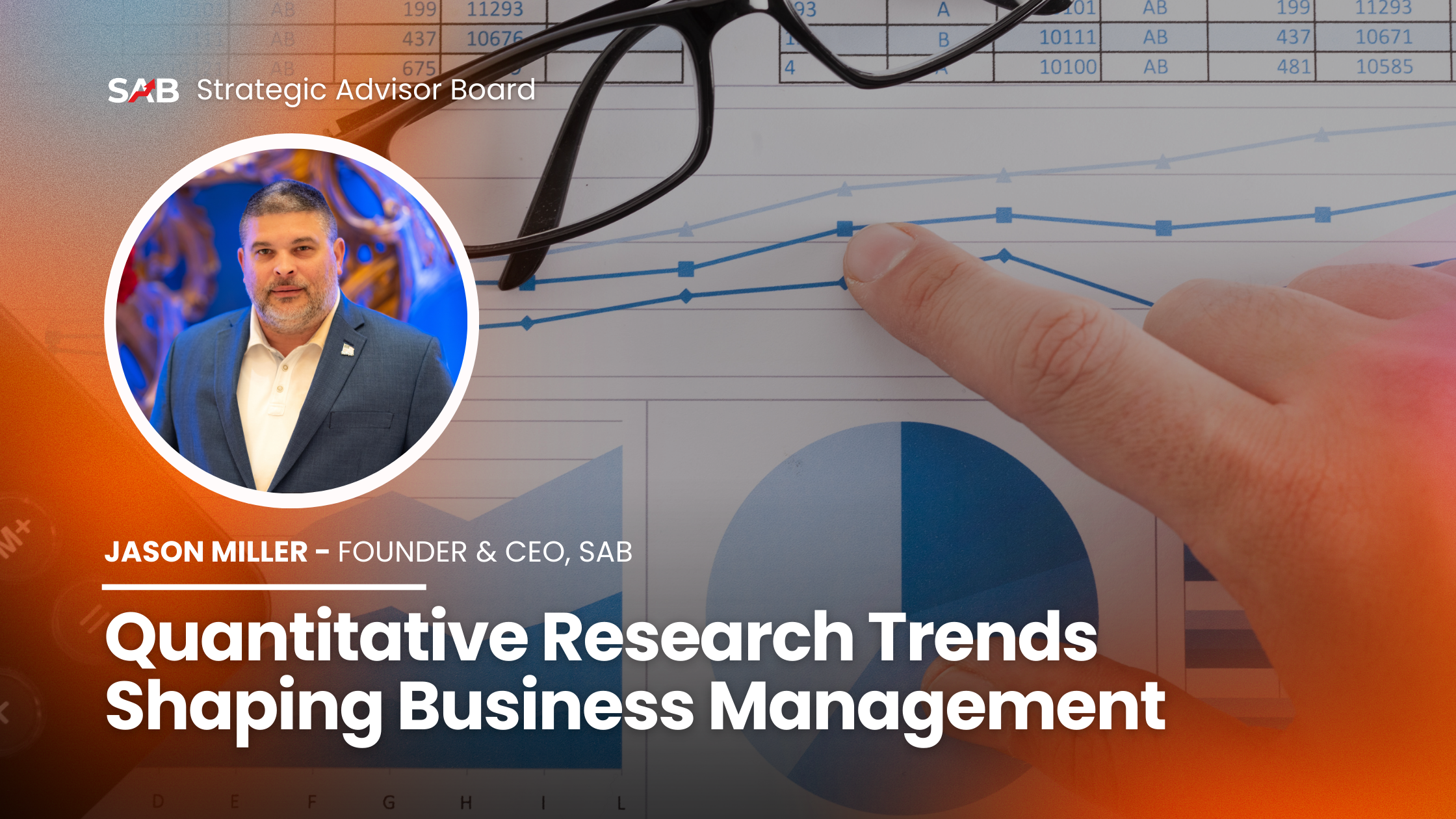
How do businesses successfully navigate the complexities of modern management and make decisions in a data-driven environment? As business management evolves, how does quantitative research influence strategies and operations?
How are companies using the latest trends in quantitative research to become more efficient, innovative, and responsive to market demand?
Big data has changed the face of quantitative research within organizations. With today’s advanced analytics tools and techniques, businesses can discover and extract patterns and trends hidden within vast amounts of data, leveraging machine learning and artificial intelligence. This trend is enabling businesses to have more accurate forecasts, personalized customer experiences, and optimized operations.
Predictive analytics uses historical data from events to make predictions of the results in the future. Businesses can use statistical algorithms and machine learning models to understand and predict market, customer, and potential risks.
Such proactive action would aid corporations in making informed decisions, mitigating risks, and successfully taking new opportunities. For example, predictive analytics can be used in inventory management corporations to predict demand for products and hence optimize the level of stock in retailing.
Real-time data analysis should be utilized in a fast-moving business environment. It provides instant insight into ongoing processes and enables businesses to respond promptly to emerging trends and issues.
This is quite important in fields such as finance, where the market conditions could vary even within seconds. Real-time analysis gives businesses the ability to act in time; therefore, it adds swiftness to them, making them competitive.
Quantitative research measures and enhances the experience of customers. Enterprises use metrics from quantitative research platform to quantify customer experience for process improvements. These metrics can be analyzed to more precisely understand customer needs and preferences, ultimately improving customer loyalty and retention.
Quantitative research along with qualitative market research is changing how corporations administer and monitor employee performance. Tracking KPIs such as productivity, efficiency, and engagement provides in-depth insights into workforce dynamics.
Data from this framework may help enable much more objective performance appraisals and targeted training programs, influencing higher employee satisfaction.
Quantitative research enables supply chain operations to become more efficient. Business houses can use data regarding the various requirements in inventory levels, times to delivery, and even supplier performance to work out inefficiencies and improve the same.
Linear programming and simulation modeling techniques are used to optimize resource use while minimizing costs, making supply chains more effective and resilient.
Quantitative techniques are essential in analyzing and enhancing financial performance. Businesses use various financial metrics and ratios to ascertain their profitability, liquidity, and solvency.
Firms could apply the quantitative techniques of trend analysis and variance analysis in establishing their financial strengths and weaknesses, which would inform strategic decisions and eventually lead to better financial stability.
Market segmentation is a process through which a broad market is divided into small, manageable subsegments that are based on certain criteria such as demographic, behavioral, or psychographic characteristics.
Quantitative and mobile qualitative research tools analyze data about markets in a bid to identify distinguishable segments within a market. It enables firms to focus their marketing efforts on those areas of a market in ways that are more likely to attract and engage prospects.
Quantitative research on online ethnography can help drive product development and innovation. For this reason, businesses can leverage customer feedback, market trends, and competitive data to identify opportunities for new products and to improve existing ones. This approach lowers the risks involved in product failure and enables faster innovation.
Benchmarking is the process of measuring a company's performance metrics against the industry standard or best practice. Quantitative studies and qualitative insights give data for benchmarking, in which firms are in a position to know the performance gaps to fill those gaps.
| Tool/Technology | Description | Key Benefits |
| Customer Relationship Management (CRM) Systems | Platforms that manage and analyze customer interactions and data throughout the customer lifecycle. | Enhances customer relationship management and provides valuable insights into customer behavior. |
| Marketing Automation Platforms | Software that automates marketing tasks such as email campaigns, social media posts, and lead nurturing. | Increases efficiency, personalizes customer interactions, and improves campaign performance. |
| Data Analytics Software | Tools that analyze and interpret large volumes of data to extract actionable insights. | Provides in-depth data analysis, identifies trends, and supports data-driven decision-making. |
Quantitative research is forcing potent change in business management in a way that captures data-driven insight for front-line decision-making. From big data analytics to real-time analytics, these trends are living innovation and increasing efficiency across industries.
By remaining abreast of these trends, businesses can thus stay ahead of the competition, be proactive to changes in the market, and attain sustainable growth.
1. What is the role of big data and analytics in business management?
Big data and analytics allow businesses to uncover hidden patterns and trends by processing large volumes of data. This helps in accurate forecasting, personalized customer experiences, and optimized operations.
2. How does predictive analytics benefit businesses?
Predictive analytics uses historical data to forecast future outcomes, helping businesses make informed decisions, manage risks, and seize opportunities by anticipating market trends and customer preferences.
3. Why is real-time data analysis important for businesses?
Real-time data analysis provides immediate insights into ongoing processes, enabling businesses to quickly respond to emerging trends and issues, thereby enhancing agility and competitiveness.
Take your business to new heights with the 3-Pillar System from our International Best-Selling Book, “Be Good, Be Brief, Be Gone.” This proven strategy has helped countless entrepreneurs scale to 7-figure success, and now it's your turn! Download your free copy today at http://growfast.vip and start transforming your business.
This article was brought to you by: Jason Miller, AKA Jason "The Bull" Miller, Founder/CEO and Senior Global Managing Partner of the Strategic Advisor Board - What has your business done for YOU today?
Written and Published By The Strategic Advisor Board Team
C. 2017-2024 Strategic Advisor Board / M&C All Rights Reserved
www.strategicadvisorboard.com / info@strategicadvisorboard.com